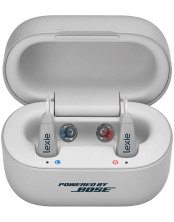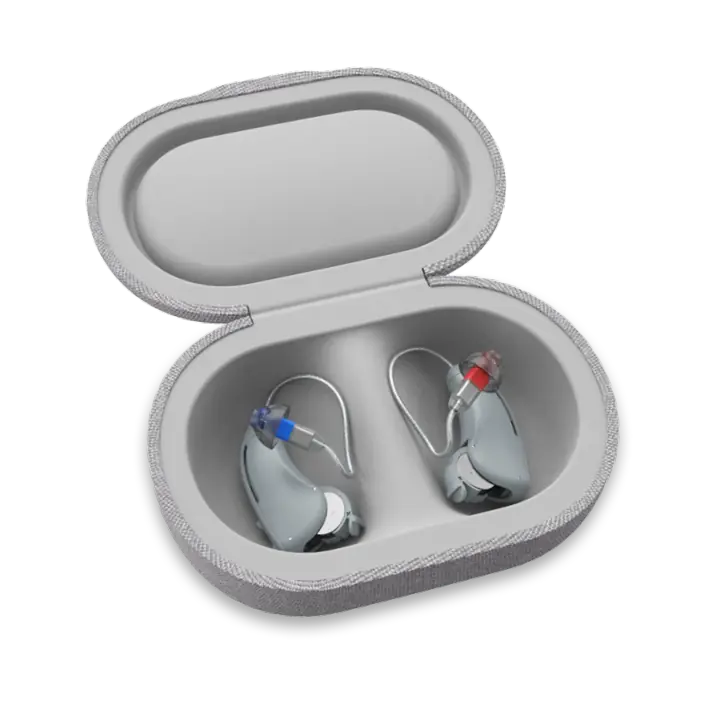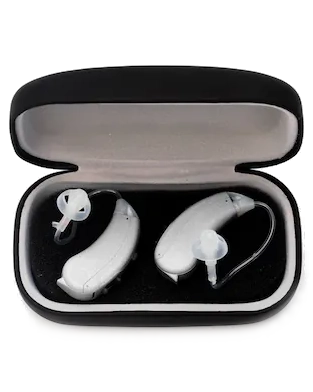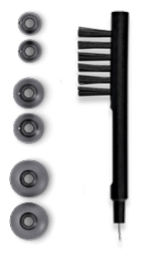5 Reasons You Need a Hearing Aid Microphone
Published: April 12, 2024
Updated: May 9, 2024
One of the most common complaints for those with hearing loss is how difficult it can be to understand speech in noisy environments. Most people will experience some difficulty listening to conversations in the presence of background noise, but the hearing impaired may experience significant difficulty—especially over longer distances or in the absence of visual clues.
While some hearing aids have specialized settings or technology to reduce the amount of background noise, this problem can still occur even for those using the devices. That’s where additional hearing aid microphones come in.
While hearing aids come equipped with microphones in the device, there are external hearing aid microphones—often referred to as remote or companion microphones—that can help improve performance. Let’s take a look at what remote microphones for hearing aids are and their benefits.
What is a Hearing Aid Microphone?
A remote or companion microphone is a small, wireless accessory designed to work alongside your hearing aid. The main purpose of a remote microphone is to bring desired sounds, like a person’s voice, directly to the ears. This makes listening in noisy environments easier, meaning you can relax and enjoy the conversation.
How Does a Remote Hearing Aid Microphone Work?
Modern remote microphones connect to hearing aids wirelessly. Some use a magnet, but most of the latest hearing aid accessories connect using Bluetooth®.
After connecting, the user hands the remote microphone to the person they want to hear. The speaker would hold or clip the microphone onto their clothes and speak as they normally would. The sound of their voice is picked up by the remote microphone and sent straight into the hearing aids.
Many hearing aid providers offer remote microphones that can be paired with their devices. There are also universal companion microphones that can connect to any hearing aid with a telecoil feature. Some can do both—for example, Lexie Lumen hearing aids are equipped to connect to a companion microphone or a universal telecoil.
5 Reasons to Use a Remote Hearing Aid Microphone
Utilizing a remote microphone is especially useful in situations where a lot of background noise is present. Let’s take a look at some reasons to use a remote hearing aid microphone.
1. To hear better in educational settings
Large classrooms, lecture halls, or auditoriums offer less than-ideal listening situations because they are noisy and there’s a great distance between the students and the speaker. Utilizing a remote hearing aid microphone in these settings can significantly improve the ability to hear and absorb information.
2. To perform better in meetings
Adults with hearing loss often report great difficulty hearing properly in meetings. The seating arrangement, room size, and whether it’s a large group has an impact on noise levels and makes it difficult to follow conversations.
A remote microphone can be very helpful in these situations. If there is only one speaker or presenter at a time, that person can speak directly into the microphone. It can also be used in a boardroom meeting by placing the microphone in the center of the table. This will make it easier to follow and engage with the conversation.
3. To hear better in social gatherings
Social gatherings, such as parties or events, typically feature a lot of background noise. For those with hearing loss, these situations can be frustrating, and some may choose to avoid them entirely—but using a remote microphone can alleviate some of the stress and strain of conversing in these environments.
4. To further improve the sound quality of hearing aids
Modern hearing aid features enable wearers to cope in various listening environments. Even with all the advances, hearing aids are generally limited in how they can help with background noise. A remote microphone can help get the most out of a hearing aid in these situations.
5. To overcome special hearing needs
Every hearing aid user can benefit from a remote microphone, but it can be especially helpful to someone with special hearing needs. Some people, like those getting older or people with untreated hearing loss, have poor speech discrimination abilities, even with hearing aids. These people will often hear better when using a remote hearing aid microphone because the sound is more direct and clear.
Remote microphones also help children and adults with auditory processing difficulties and disorders, who find it harder to distinguish between speech and background noise. These people might have normal hearing or even a slight hearing loss, but need a bit of extra help when listening to something very important.
Lexie’s Hearing Aid Companion Microphone
Lexie’s companion microphone is a portable, effective option for getting all the benefits of a hearing aid microphone. It fits easily into your pocket so that you can take it with you wherever you go. It comes with a small, compact charger that makes it easy for you to keep it charged. Best of all, it’s simple to use and pairs easily with the Lexie Lumen.
To learn more about Lexie’s companion microphone or how to get your pair of Lexie OTC hearing aids, shop online or contact a Lexie Expert®.






